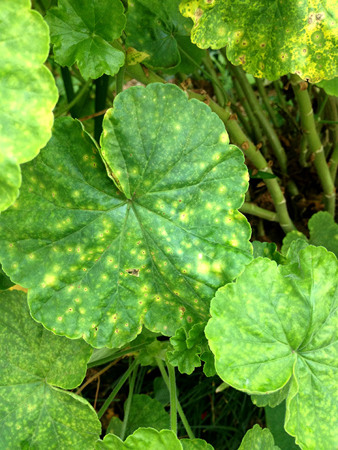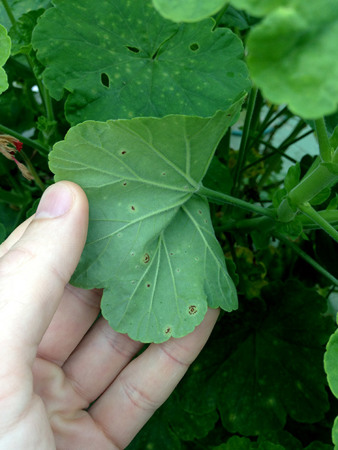Rust
BackRust is a term used for a group of fungal species which attack a broad range of plants. The disease is usually seen on the underside of leaves where small rusty brown spores develop. Spores can be other colours, including orange and yellow, and can also occur on other parts of a plant. Infected leaves usually show yellow discolouration on the upper side of the leaf corresponding to where the rust spore is located on the underside. Badly infected leaves will drop and younger plants can be severely stunted or die.
Plants Attacked
A wide variety including: roses, daylilies, frangipani, myrtles, snapdragons, geraniums, orchids
Organic Control Methods for Rust
- OCP eco-fungicide is registered to control rust in geraniums. It will destroy the fungal growth quickly and leave a protective coating to prevent new spores germinating. Additional trial work is being done for rust in other plants.
- Adding OCP eco-seaweed into the mix is also recommended to help plants strengthen their foliage and reduce stress.
- Remove badly infected leaves and clean up any that are on the ground.
- Avoid watering the foliage and ensure good airflow around the plant.
Myrtle Rust
This is a new rust which attacks plants in the myrtle family (eg eucalypts, lilly pilly and melaleucas). eco-fungicide and eco-rose are not officially registered for controlling this disease so you won’t see it on their labels. They are however broad spectrum fungicides and we have had several reports from the field that users were happy with the results against Myrtle Rust. Further research is being undertaken.
Currently OCP eco-fungicide has approval for Myrtle Rust suppression on tea trees (APVMA PERMIT NUMBER – PER13793).




